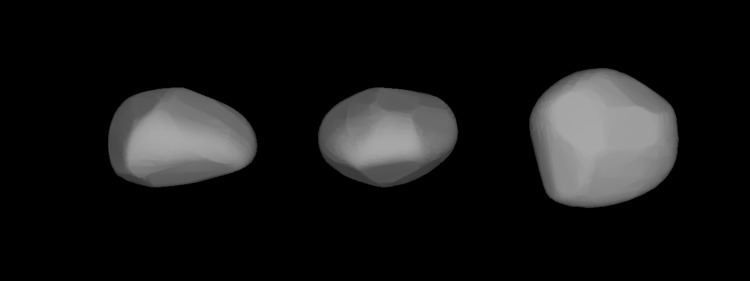Observation arc 145.80 yr (53255 d) Discovered 19 April 1870 | Discovery date 19 April 1870 Aphelion 2.9539 AU (441.90 Gm) Orbits Sun Discovery site Marseille Observatory | |
 | ||
Perihelion 2.51115 AU (375.663 Gm) Similar 135 Hertha, 125 Liberatrix, 128 Nemesis, 165 Loreley, 441 Bathilde | ||
Asteroid 110 lydia
110 Lydia is a large belt asteroid with an M-type spectrum, and thus may be metallic in composition, consisting primarily of nickel-iron. It was discovered by French astronomer Alphonse Borrelly on April 19, 1870 and was named for Lydia, the Asia Minor country populated by Phrygians. The Lydia family of asteroids is named after it.
Observations made during 1958–1959 at the McDonald Observatory and in 1969 at the Kitt Peak National Observatory found an uneven light curve with a period of 10.9267 hours. In the late 1990s, a network of astronomers worldwide used light curves to derive spin states and shape models of 10 new asteroids, including (110) Lydia. They obtained a period of 10.92580 hours, with the brightness varying by no more than 0.2 in magnitude.
In the Tholen classification system, it is categorized as an M-type asteroid, while the Bus asteroid taxonomy system lists it as an Xk asteroid. Absorption features in the near infrared are attributed to low-iron, low-calcium orthopyroxene minerals. Water content on the surface is estimated at 0.14–0.27 by mass fraction (wt%). Measurements of the thermal inertia of 110 Lydia give a value between 70 and 200 J m−2 K−1 s−1/2, compared to 50 for lunar regolith and 400 for coarse sand in an atmosphere. It is a likely interloper in the Padua family of minor planets that share similar dynamic properties.
Lydia occulted a dim star on September 18, 1999.
